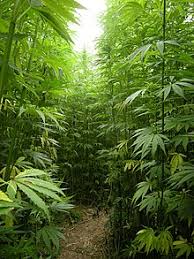
Holistic Pest Management for Hemp Farms
Share
Introduction:
Hemp cultivation has gained popularity due to its versatility and numerous applications, ranging from textiles and building materials to CBD products. However, like any crop, hemp is susceptible to various pests that can threaten its growth and yield. Implementing effective pest management strategies is crucial for ensuring healthy hemp plants and maximizing productivity. This blog explores common pests affecting hemp and outlines integrated pest management (IPM) practices to control them effectively .

Common Pests in Hemp Cultivation
1. Aphids (Aphididae family)
Description:Small, soft-bodied insects that can be green, yellow

Damage: Aphids suck sap from young shoots and leaves, causing yellowing, curling, and stunted growth. They excrete honeydew, leading to sooty
Management: Introduce natural predators like ladybugs and Apply neem oil or insecticidal soap as organic control measures.

2. Spider Mites (Tetranychus spp.)
Description: Microscopic arachnids often red


3. Caterpillars (Various species)
Description: Larvae of moths and butterflies that feed on leaves


4. Corn Earworm (Helicoverpa zea)
Description: Green or brown caterpillars with stripes along their bodies.


5. Hemp Russet Mite (Aculops cannabicola)
Description: Tiny, elongated mites that are difficult to see with the naked eye.


Integrated Pest Management (IPM) Strategies for Hemp
Integrated Pest Management (IPM) combines various control methods to manage pest populations effectively and sustainably. Here are key components of an IPM strategy for hemp:
1. Cultural Controls
Crop Rotation: Rotate hemp with non-host crops to disrupt pest life cycles and reduce pest buildup.
Sanitation: Remove plant debris and weeds that can harbor Regularly clean cultivation areas to prevent pest infestations.
Healthy Soil: Maintain soil health through proper fertilization and organic matter to strengthen plants against pests.

2. Biological Controls
Beneficial Insects: Introduce or encourage natural predators and parasitoids, such as ladybugs, lacewings, and parasitic wasps, to keep pest populations in check.


3. Mechanical Controls
Handpicking: Manually remove pests like caterpillars and aphids if infestations are small.
Traps: Use sticky traps and pheromone traps to monitor and control flying insect

4. Chemical Controls
Organic Sprays: Apply neem oil, insecticidal soaps, and horticultural oils to control soft-bodied insects.


5. Monitoring and Decision Making
Regular Scouting: Inspect plants frequently for signs of pests and Early detection is crucial for effective control.
Threshold Levels: Establish action thresholds to determine when pest populations are high enough to warrant control measures.
Practical Tips for Hemp Pest Management
1. Choose Resistant Varieties
Select hemp varieties known for their resistance to common This can reduce the likelihood of severe infestations.
2. Enhance Plant Health
Healthy plants are more resistant to Ensure proper watering, nutrition, and sunlight to promote robust growth.
3. Encourage Biodiversity
Plant a variety of herbs and flowers around hemp to attract beneficial insects and create a balanced ecosystem.
4. Rotate Crops
Practice crop rotation to prevent the buildup of pest populations in the
5. Educate and Train
Stay informed about the latest pest management techniques and train others in sustainable practices.
Conclusion
Effective pest management in hemp cultivation is essential for maintaining the health and productivity of this versatile crop. By adopting integrated pest management strategies, growers can control pest populations sustainably and minimize the use of harmful chemicals. Whether growing hemp for fiber, seeds, or CBD, implementing these practices will help ensure a healthy and successful harvest. Through vigilance, cultural practices, biological controls, and targeted chemical use, farmers can protect their hemp crops from pests and enjoy the benefits of this valuable plant.
